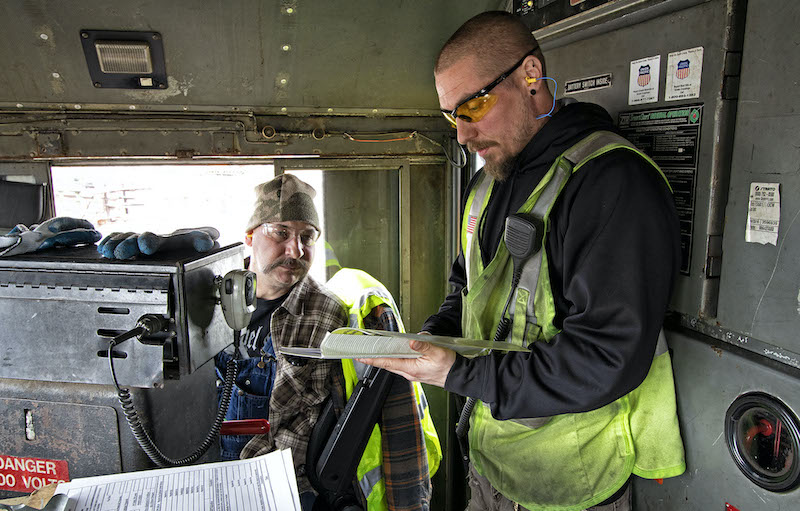By Justin Franz
WASHINGTON — The Federal Railroad Administration announced Wednesday that it would attempt to implement a nationwide minimum crew size rule for the second time in six years. The effort to ensure that all freight trains have at least two people in the cab comes as the nation’s railroads and labor square off during a contentious round of contract talks where crew size is one of the major sticking points.
The FRA last tried to implement a minimum crew size rule back in 2016, but it was later shot down by the Trump administration in 2019. In the three years prior to the FRA withdrawing its proposed rule, the agency had received nearly 1,600 comments about it, with 1,545 being in favor of such a rule. In a press release on Wednesday, federal officials said this new rule was backed up by data, would enhance safety and replace an existing patchwork of state laws regarding crew size with a uniform national standard.
“For the past few years, our rail workers have worked hard to keep people and goods moving on our nation’s railroads, despite a global pandemic and supply chain challenges,” said U.S. Transportation Secretary Pete Buttigieg. “This proposed rule will improve safety for America’s rail passengers—and rail workers—across the country.”
The FRA would allow current one-person operations to be grandfathered in (such as on passenger trains or on short lines) and would let railroads petition for new single-person operations following a federal review.
“We are committed to data-driven decision making,” said FRA Administrator Amit Bose. “In cases where railroads wish to operate with fewer than two crewmembers, we are proposing that they perform a rigorous, thorough, and transparent risk assessment and hazard analysis, and FRA will provide an opportunity for public comment on these submissions.”
The roots of a minimum crew rule date back to 2013 and the fallout from the deadly Lac-Megantic, Que., wreck. In July of that year, a Montreal, Maine & Atlantic oil train derailed, leveling an entire downtown and killing 47 people. The train had rolled out of siding after being poorly secured by a one-person crew.
Decades ago, all freight trains had at least five people on board, but through advancements in technology, that number was reduced to two by the 1990s. In recent years, Class I railroads have suggested that they could have one engineer on board a train and a conductor in an automobile working with multiple trains. The railroads say that is possible with technology like Positive Train Control.
The Association of American Railroads was quick to criticize the FRA’s proposal.
“Today’s proposal prioritizes politics over sound, data-driven safety policy,” said AAR President and CEO Ian Jefferies. “In 2019, the FRA thoroughly reconsidered a rule that was very similar to the one being put forth today and retracted it after finding a complete absence of a safety justification for that rule. We knew then, and we especially know now with the full deployment of Positive Train Control technology, that there is no plausible safety justification for regulating the number of individuals physically located inside the cab of a locomotive.”
Comments on the proposed rule can be submitted to the docket FRA-2021-0032 via www.regulations.gov and must be received by September 26.


